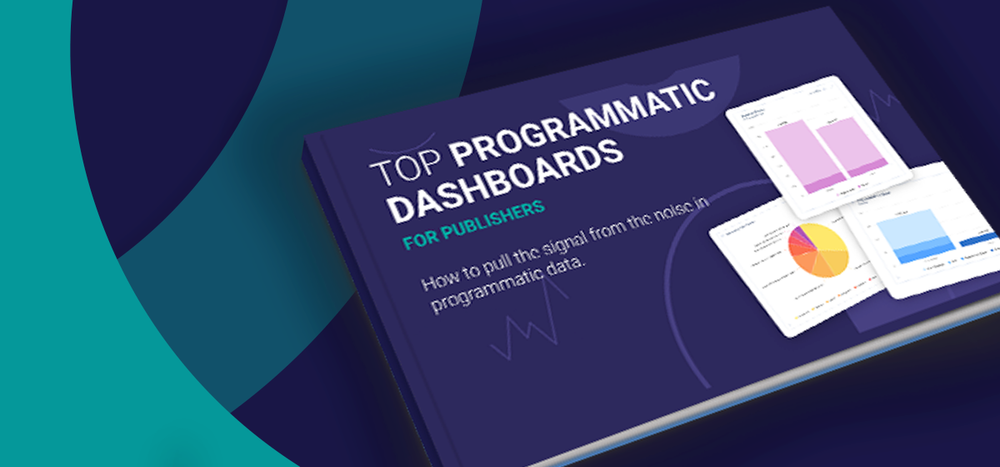(This is part two of our two part series on first-party data sets for publishers. If you haven’t yet, you can read part one here.)
In part one of our series, we looked at the value of first-party data in a cookieless ad industry. Here, we’ll be taking an in-depth look at some ways you can implement a first-party strategy quickly and with the most meaningful impact. There are many ways to develop first-party data sets, but they are mostly variations on the theme of creating and maintaining a dialogue with your audience. Since first-party data is dependent on a two-way relationship with both new and existing users, the more outlets you’re utilizing to facilitate that relationship, the better.
Here are five actionable and cost-effective ways to help you start honing your approach on developing first-party data sets.
1. Develop Original and Interactive Content
Relevant and user-focused content such as blog posts and email newsletters will always be in demand. As part of a first-party data strategy, teams must be sure to focus on content that meets your audience’s needs, and offers value for their engagement. The exchange of information becomes much easier for users when they are getting something in return for their patronage.
Questions to ask yourself:
- What specific niche is this content filling?
- Does existing traffic data show that my audience wants this type of content?
- How do I want my audience to engage with this content?
- Is this content structured in a way that matches how my audience would likely engage with it?
- Am I embedding useful information, links and polls that promote engagement?
- Are there any ways to collect first-party data signals from this content that goes beyond web traffic?
Developing public-facing content has the added benefits of potentially boosting your search engine ranking, furthering your thought leadership within your field, and keeping your site(s) top-of-mind with new and returning users.
2. Expand Your Content Footprint On Social Platforms
Social channels like LinkedIn, TikTok, Instagram and Facebook also offer valuable opportunities to drive traffic to your sites. While these are third-party platforms, the presence you have there can be an invaluable piece of your first-party approach. After all, the network effects of social media platforms make it a robust tool in building your audience, which you can then cultivate on your own site once they’ve engaged with you.
A well-developed social following can offer several key benefits and data points, including new demographic information, new targeting considerations, and a chance to present your brand in a more humanized way which can resonate with everyday users. Focus on creating an active posting strategy, with static and dynamic content that stops the scroll, spreads your messaging and entices users to your pages with crystal clear calls to action.
Above all, keep it a two-way conversation with content that encourages interactivity. Polls, details about upcoming events, and consistent responsiveness in the comments section are excellent examples of maintaining a two-way conversation with users. An engaged social audience, one that feels included and heard, is more likely to reward your efforts with their trust. This, in turn, makes it easier for them to share more valuable information and improve the quality of your first-party data sets.
3. Provide Value With Informative & Engaging Events
Events are another effective way to offer value to your audience. A well-publicized and complimentary webinar, roundtable, or convention appearance can draw a crowd of interested users, and data-rich inquiries can be incorporated nicely into your invitation emails and landing pages about the event. Whatever your vertical, your expertise is valuable to the segments of your audience that want to benefit directly from it. Imparting some of that expertise for the low, low price of some high-level personal information makes it that much easier for them to seal the deal.
4. Deepen the New User Registration Process
New users are well-accustomed to going through an application process that involves volunteering some form of information. Even at the most basic levels, that information offers valuable first-party insights about who is digesting your content.
Whatever data points may be valuable to you, you should consider adding them as voluntary questions as part of the sign-up process. Not every user will provide an answer, but for a large enough publisher, a few percentage points can yield a large amount of helpful data. It’s important to discuss this registration through the lens of building trust and providing value. Everyone wants a different experience from their content, and the questions you ask can help you tailor their experience to their liking.
5. Limit Access to Premium Content
While not the most popular method for your audience, limiting access to certain premium areas of your content is an effective way to deepen your relationship with some of your most interested audience members. But there’s a fine line between maintaining a sense of exclusivity around your content and being misinterpreted as greedy. If a hard paywall isn’t a fit for you, consider “leakier” (industry term) models like:
- Freemium - Curating a mixture of free and paid content
- Metering - Allowing a limited amount of free visits to your content
- Dynamic Metering - A more customized form of metering that limits access to content based on individual users’ preferences and interests.
Conclusion
Though the when isn't crystal clear yet, third-party deprecation is coming. That’s why it’s crucial to have a reliable alternative in place before it finally arrives. One that will allow you to continue to gather and utilize the data that publishers need to operate and scale effectively.
The methods that we’ve shared with you here are a great start to any first-party data strategy. But perhaps the most important takeaway is what these ideas are meant to provide for your audience; a sense of quality, relevance, and value. Create consistent opportunities to demonstrate all three, and you will be well on your way to deepening your relationship with your users, earning their trust with their data, and positioning yourself for long-term success once the last third-party cookie has vanished from the digital jar.






